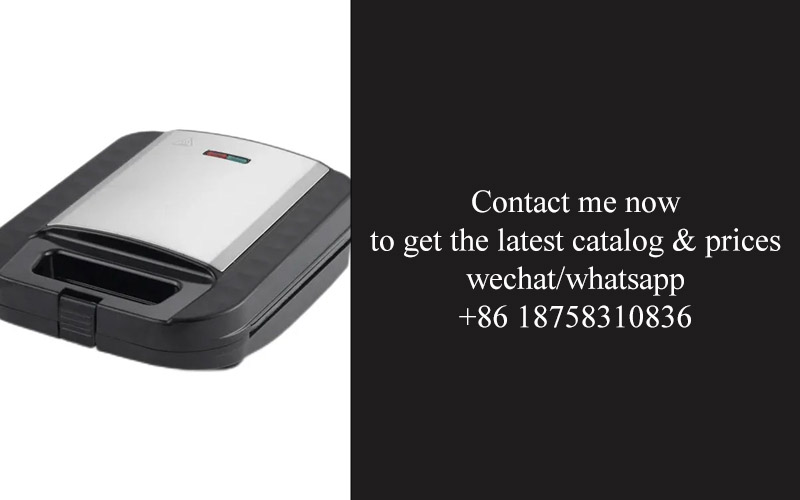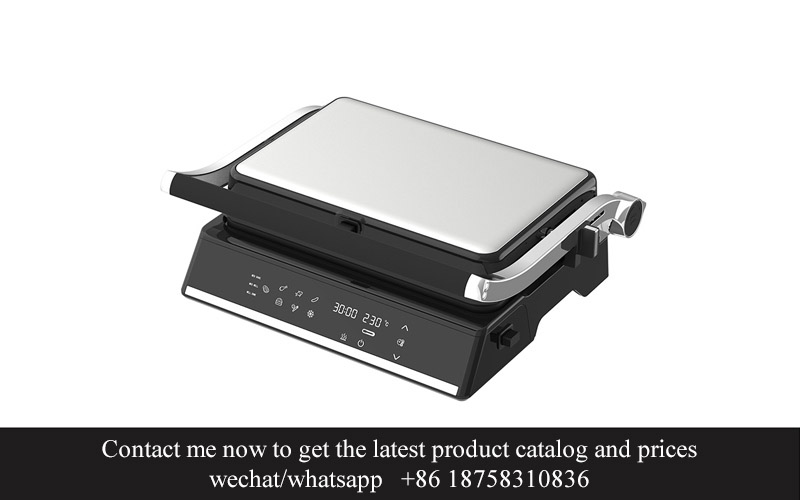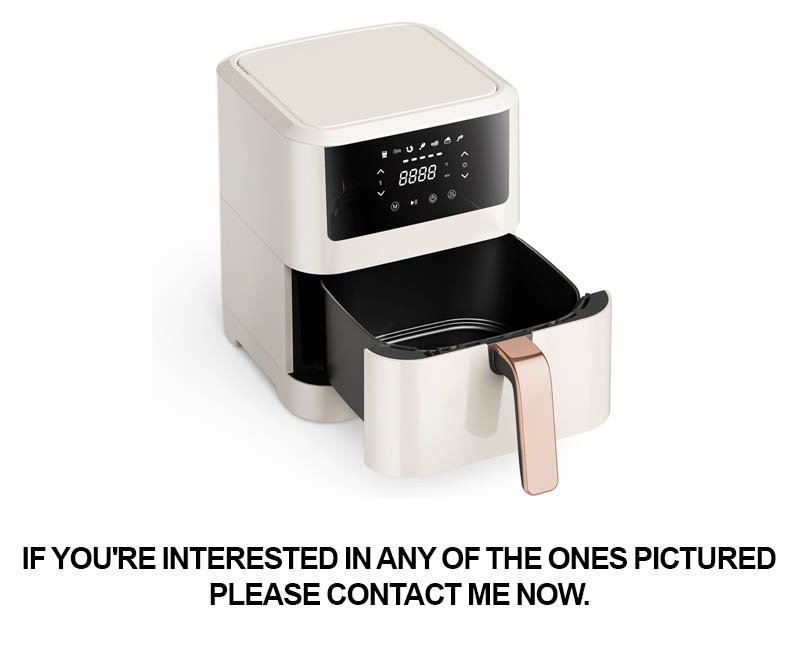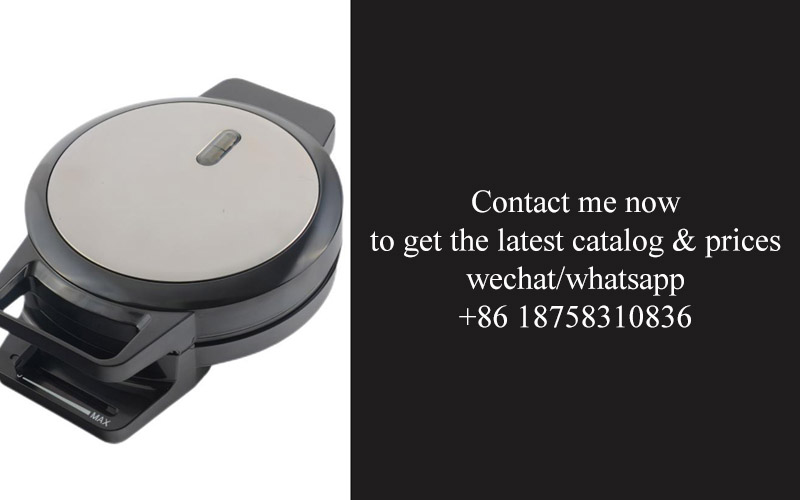Address
304 North Cardinal
St. Dorchester Center, MA 02124
Work Hours
Monday to Friday: 7AM - 7PM
Weekend: 10AM - 5PM
Address
304 North Cardinal
St. Dorchester Center, MA 02124
Work Hours
Monday to Friday: 7AM - 7PM
Weekend: 10AM - 5PM

In the ever-evolving world of kitchen appliances, the air fryer has emerged as a versatile and health-conscious choice for home cooks. As the popularity of this kitchen gadget continues to soar, it’s crucial for manufacturers to stay ahead of the curve with innovative designs and cutting-edge technology. Today, we delve into the intricacies of the air fryer market, exploring the demand, manufacturing processes, and the future of this dynamic industry.
The air fryer has quietly but surely become a staple in modern kitchens, transforming the way we cook and eat. Once a niche product, it has now surged in popularity, becoming a game-changer in the kitchen appliance industry. Its rise can be attributed to several key factors that have made it an indispensable tool for health-conscious and convenience-seeking consumers alike.
Once confined to deep-frying aficionados, the air fryer’s ability to mimic the crispy texture of fried foods without the excess oil has won over many. This innovation has not only made it easier to enjoy favorite dishes with a lighter footprint but has also opened up a world of culinary possibilities. Chefs and home cooks are now experimenting with a variety of recipes, from crispy French fries to golden-brown chicken wings, all with a fraction of the fat.
The health benefits of air frying are undeniable. Traditional deep-frying involves submerging food in oil, which can lead to a high calorie count and increased risk of heart disease. In contrast, air fryers use hot air to circulate around the food, reducing the need for oil by up to 80%. This healthier cooking method is a game-changer for those looking to maintain a balanced diet without sacrificing taste.
Another factor contributing to the air fryer’s rise is its versatility. These appliances are no longer just for frying; they can bake, roast, and even dehydrate. This multipurpose functionality has made the air fryer a one-stop-shop for a variety of cooking tasks, simplifying meal preparation and reducing the need for multiple appliances.
The technology behind air fryers has also evolved significantly. Modern models come with features like adjustable temperature controls, timers, and pre-programmed settings that make cooking a breeze. These advancements have made air fryers user-friendly for people of all cooking skills, from beginners to seasoned chefs.
The market has responded to the demand for air fryers with a plethora of options. Brands are now offering a wide range of sizes, designs, and price points to cater to different consumer needs. From compact models perfect for small apartments to large capacity units suitable for families, there’s an air fryer for every kitchen.
Moreover, the environmental impact of air frying cannot be overlooked. By reducing the amount of oil used, air fryers help to minimize waste and reduce the carbon footprint associated with traditional frying methods. This eco-friendly aspect has resonated with consumers who are increasingly conscious of their environmental impact.
The air fryer’s success has also sparked a wave of innovation in the kitchen appliance industry. Manufacturers are now exploring new materials, such as ceramic coatings that eliminate the need for oil altogether, and incorporating smart technology to make cooking even more intuitive. These advancements are not only enhancing the performance of air fryers but also setting the stage for future innovations in cooking technology.
In terms of consumer behavior, the air fryer has become a must-have item for many. It’s not uncommon to see air fryers featured in kitchen appliance gift guides and as top picks in product reviews. The appliance’s popularity is further bolstered by social media influencers and cooking enthusiasts who share their air fryer recipes and cooking tips, driving demand and inspiring others to invest in their own.
The rise of the air fryer has also had a ripple effect on the food industry. Fast-food chains and restaurants have started to offer air-fried versions of their popular items, recognizing the growing consumer preference for healthier options. This shift is not just limited to fast food; it’s permeating the entire foodservice industry, leading to a demand for air fryer-compatible products and ingredients.
In conclusion, the air fryer’s ascent to kitchen-appliance stardom is a testament to the power of innovation and consumer demand. Its ability to offer healthier, more convenient, and versatile cooking options has made it a game-changer in the kitchen. As the technology continues to evolve and consumer awareness grows, the air fryer is poised to remain a staple in modern kitchens for years to come.

In the ever-evolving landscape of kitchen appliances, the OEM (Original Equipment Manufacturer) model has emerged as a pivotal approach for brands looking to innovate and meet consumer demands efficiently. This collaboration between manufacturers and brands allows for a seamless integration of custom features, ensuring that each product is tailored to the specific needs of the market.
The essence of the OEM model lies in the ability to offer unique, branded solutions without the overhead of in-house production. This symbiotic relationship empowers brands to focus on marketing and customer service, while the OEM partner handles the intricate details of manufacturing.
One of the key advantages of the OEM approach is the flexibility it provides. As consumer preferences shift, OEMs can quickly adapt production lines to accommodate new designs and technologies. This agility is particularly valuable in the fast-paced air fryer market, where innovations like adjustable temperature controls and smart connectivity are becoming increasingly popular.
Customization is at the heart of the OEM model. By working closely with brands, OEMs can create air fryers that not only meet but exceed customer expectations. This includes everything from the aesthetics of the appliance to the functionality, such as the inclusion of specific features that address common user complaints or desires.
Efficiency is another cornerstone of the OEM model. By streamlining the production process and leveraging economies of scale, OEMs can produce high-quality air fryers at a lower cost. This cost-effectiveness is passed on to the consumer, making premium features more accessible.
The collaboration also fosters a culture of innovation. As OEMs work with multiple brands, they gain insights into a wide range of design ideas and market trends. This exposure can lead to the development of new technologies and features that might not have been possible working in isolation.
In the realm of mold making, the OEM model is particularly beneficial. Custom molds are created for each brand’s unique air fryer design, ensuring that the final product is not only functional but also visually appealing. The precision required in mold making is crucial, as it directly impacts the quality and consistency of the air fryer’s components.
Moreover, the mold making service allows for the creation of complex shapes and intricate details that can differentiate a product in a crowded market. Whether it’s a sleek, modern design or a nostalgic throwback to classic appliances, the mold making process can bring these visions to life.
Quality control is also enhanced through the OEM model. Since the manufacturer is responsible for the production, they have a vested interest in ensuring that the final product meets the brand’s standards. This often includes rigorous testing and quality checks at various stages of the manufacturing process.
From a logistical standpoint, the OEM model simplifies supply chain management. Brands can rely on their OEM partners to handle inventory, shipping, and compliance with various regulations, allowing them to focus on their core competencies.
In the competitive air fryer market, the OEM model is a strategic advantage. It allows brands to enter new markets with confidence, leveraging the expertise of a trusted manufacturer. For consumers, this means a wider variety of high-quality air fryers to choose from, each with its own set of innovative features.
The partnership between brands and OEMs is not just about producing air fryers; it’s about creating a narrative of continuous improvement and innovation. By combining the creative vision of a brand with the manufacturing prowess of an OEM, the air fryer market can continue to evolve, offering consumers the best of both worlds: personalized products and efficient, cost-effective solutions.

In the world of kitchen appliances, the role of mold making service in air fryer production cannot be overstated. This critical process is the backbone of creating durable, efficient, and aesthetically pleasing air fryers that cater to the diverse needs of consumers. Let’s delve into why mold making service is so important.
Mold making is the art of crafting the molds that will be used to produce the various components of an air fryer. These molds are not just simple shapes; they are intricately designed to ensure the perfect fit and function of each part. The precision required in mold making is paramount, as even the smallest deviation can lead to a defective product.
The quality of the mold directly impacts the quality of the air fryer. A well-crafted mold ensures that the plastic or metal parts it produces are free from imperfections like warping, cracking, or uneven surfaces. This not only enhances the appearance of the air fryer but also contributes to its longevity and performance. When every part is perfectly formed, the overall reliability of the appliance is significantly increased.
In the competitive landscape of the kitchen appliances market, time is of the essence. Mold making service plays a crucial role in speeding up the production process. A mold can be designed and manufactured quickly, allowing for rapid prototyping and production. This agility is particularly beneficial when introducing new models or making quick adjustments to existing designs in response to market demands or consumer feedback.
Customization is another key aspect where mold making service shines. Different markets have varying preferences and requirements. For instance, some regions may prefer air fryers with larger baskets, while others might prioritize energy efficiency. By offering mold making services, manufacturers can create molds that accommodate these specific needs, ensuring that the final product aligns with local tastes and standards.
The complexity of air fryer designs also necessitates high-quality mold making. These appliances often feature multiple parts that must fit together seamlessly. A mold that can produce intricate details with precision is essential for creating components like the heating element, fan, and cooking basket. The ability to replicate these components with exacting tolerances is what sets apart a good mold from a great one.
Moreover, the mold making process itself is an engineering marvel. It involves the use of advanced materials and techniques to ensure that the molds are durable and can withstand the high temperatures and pressures of the injection molding process. The molds must also be able to be reused multiple times without losing their precision, which is why they are often made from high-strength metals like steel or aluminum.
Cost-effectiveness is also a factor that mold making service must consider. A well-designed mold can be used to produce thousands, if not millions, of air fryers. The initial investment in creating a mold is significant, but it pays off in the long run by reducing the cost per unit. Efficient mold making not only saves money but also minimizes waste, which is a crucial consideration in today’s environmentally conscious world.
Innovation in mold making is also driving advancements in air fryer production. New materials and technologies are constantly being developed to improve the durability and performance of molds. For example, the introduction of self-lubricating molds has reduced the need for regular maintenance, thereby increasing the lifespan of the molds and the efficiency of the production process.
Lastly, the mold making service must adhere to stringent quality control standards. This is crucial for ensuring that each air fryer produced meets the highest safety and performance standards. Quality control checks at every stage of the mold making process help to prevent defects and ensure that the final product is of the highest quality.
In conclusion, the importance of mold making service in air fryer production cannot be overstated. It is the cornerstone of creating a product that is not only visually appealing but also functional, efficient, and reliable. From the precision of the mold design to the material used and the quality control measures in place, every aspect of mold making plays a vital role in shaping the success of an air fryer.

In the ever-evolving landscape of kitchen appliances, air fryers have emerged as a game-changer, offering a healthier alternative to traditional frying methods. But to truly stand out in this competitive market, manufacturers are turning to innovative ideas that push the boundaries of what air fryers can offer. Here are some fresh concepts that are shaping the future of air fryer products:
Smart Technology IntegrationAir fryers are no longer just about cooking food; they are becoming smart kitchen companions. By integrating smart technology, such as Wi-Fi connectivity and voice control, users can remotely control their air fryers, receive cooking alerts, and even access recipes directly from their smartphones. This not only adds convenience but also a touch of tech-savviness to the cooking experience.
Multi-FunctionalityThe single-purpose air fryer is a thing of the past. Innovators are now designing air fryers that can perform a variety of cooking tasks, such as roasting, baking, dehydrating, and even grilling. This multi-functionality not only saves space in the kitchen but also allows users to enjoy a wider range of cooking styles without the need for multiple appliances.
Eco-Friendly MaterialsWith environmental concerns at the forefront, there’s a growing demand for eco-friendly products. Air fryer manufacturers are responding by using sustainable materials for their appliances, from biodegradable plastics to recycled metals. These eco-conscious choices not only appeal to environmentally aware consumers but also contribute to a greener planet.
Health and Wellness FocusHealth has become a major driving force in the kitchen appliance market. Air fryer products are being developed with health and wellness in mind, featuring features like adjustable temperature controls to ensure even cooking and reduce oil usage. Some models even come with preset programs for specific healthy dishes, like vegan or gluten-free options.
User-Friendly DesignWhile functionality is key, ease of use is equally important. Innovators are focusing on creating air fryers with intuitive interfaces, easy-to-clean components, and user-friendly controls. Features like touchscreens, simple button controls, and removable baskets that fit in the dishwasher are becoming standard, making air fryers accessible to users of all ages and cooking abilities.
Customizable Cooking ProfilesUnderstanding that everyone’s taste preferences are unique, some air fryer models offer customizable cooking profiles. Users can save their favorite settings, including temperature, time, and even the type of cooking mode, allowing for personalized cooking experiences with just a few taps.
Portability and Compact SizeFor those who live in smaller spaces or enjoy cooking on the go, portability is a crucial factor. New designs are focusing on making air fryers compact and lightweight, with foldable handles and removable bases for easy storage. Some even come with travel-friendly cases, making them perfect for camping or road trips.
Interactive Cooking ExperienceAir fryers are not just kitchen gadgets; they’re becoming interactive cooking tools. Some models come with built-in cooking guides, showing users how to prepare specific dishes step by step. Others offer live video streaming of the cooking process, so users can watch their food being prepared in real-time.
Advanced Cooking TechnologyTo ensure the best possible cooking results, manufacturers are investing in advanced cooking technology. This includes things like convection fan systems for even cooking, LED lighting to monitor the cooking process, and even smart algorithms that adjust cooking times and temperatures based on the food being cooked.
Community and Sharing FeaturesThe rise of social media has led to a desire for community and sharing. Some air fryer products are designed with social features in mind, allowing users to share their cooking achievements on social platforms or join online communities for recipe swaps and cooking tips.
These innovative ideas are not just about creating new products; they’re about redefining the air fryer experience. By pushing the boundaries of what’s possible, manufacturers are ensuring that air fryers remain a staple in modern kitchens for years to come.

In the ever-evolving landscape of kitchen appliances, staying ahead of the curve is crucial. The market for air fryers has been heating up, and understanding the latest industry trends is key to navigating this dynamic sector. Here’s a look at some of the insights shaping the market today:
Air fryers have moved beyond their initial novelty status, becoming a staple in many modern kitchens. Consumers are not just looking for a healthier alternative to deep-frying; they’re seeking convenience and versatility. The market is now flooded with a variety of air fryer models, each promising unique features and benefits.
One trend that’s gaining traction is the integration of smart technology. Air fryers are no longer just about cooking; they’re about connectivity. Many newer models come with Wi-Fi capabilities, allowing users to control their appliances remotely via smartphone apps. This level of connectivity not only adds convenience but also ensures that the appliance can be updated with the latest cooking settings and recipes.
The rise of eco-conscious consumers has also influenced the market. There’s a growing demand for energy-efficient appliances, and air fryers are stepping up to the challenge. Manufacturers are focusing on creating air fryers that use less energy while still delivering the same, if not better, results. This shift towards sustainability is not only good for the environment but also for the wallets of consumers.
Customization is another key trend. Users want appliances that cater to their specific needs and preferences. From different sizes and capacities to various cooking functions, the market is seeing a surge in personalized air fryers. This includes everything from single-serve options for solo diners to large-capacity models suitable for families and gatherings.
Health and wellness are at the forefront of consumer minds, and air fryers are capitalizing on this trend. Many new models are being designed with health in mind, offering features like adjustable temperature settings and pre-programmed settings for low-fat cooking. The ability to cook with less oil is a huge draw for those looking to maintain a balanced diet.
The market is also witnessing a rise in the use of high-quality materials. As air fryers become more of a permanent fixture in kitchens, consumers are expecting appliances that not only perform well but also look great. This means a focus on durable, easy-to-clean surfaces and sleek, modern designs.
Innovation isn’t just limited to the physical design of air fryers. There’s an increasing trend towards healthier cooking methods, and air fryers are leading the way. From air-fried chicken to crispy vegetables, these appliances are expanding the possibilities of healthy cooking. The industry is also exploring new applications for air fryers, such as baking and dehydrating, broadening their appeal.
As the market continues to grow, so does the competition. Brands are vying for market share by differentiating their products through unique features, quality, and customer service. This competition is driving innovation and pushing the boundaries of what air fryers can do.
Lastly, the global nature of the market cannot be overlooked. With the rise of online shopping, consumers have access to air fryers from all over the world. This globalization has led to a more diverse range of products and has also opened up new markets for manufacturers.
In summary, the air fryer market is dynamic, with a focus on technology, sustainability, customization, health, and design. Staying informed about these trends is essential for anyone looking to succeed in this rapidly growing sector. Whether you’re a consumer or a manufacturer, keeping pace with industry trends is the key to unlocking the full potential of air fryers.

In the ever-evolving landscape of kitchen appliances, air fryers have emerged as a favorite among consumers seeking healthier alternatives to traditional frying methods. The demand for air fryers has surged, and a closer look at the data reveals several key insights into this growing trend.
The air fryer market has seen a remarkable increase in sales, with a compound annual growth rate (CAGR) that’s projected to soar in the coming years. This surge can be attributed to a combination of factors, including health consciousness, convenience, and technological advancements. Let’s delve into the specifics.
Consumer health concerns are at the forefront of the air fryer’s popularity. Data indicates that there’s a significant shift towards healthier cooking methods, with more than 60% of consumers reporting that they are interested in low-fat and low-calorie cooking options. Air fryers fit this bill perfectly, offering a way to prepare crispy, golden foods without the excessive oil.
Another compelling piece of data comes from market research firms, which have found that ease of use is a top priority for consumers when selecting kitchen appliances. Air fryers score high in this category, as they are simple to operate, have intuitive controls, and often come with a variety of pre-programmed settings. This convenience factor is a driving force behind the rising demand for air fryers.
Technological innovation plays a pivotal role in the air fryer market. The latest models now feature features like smart technology, which allows for remote monitoring and control via smartphone apps. Data from industry reports shows that these smart air fryers are becoming increasingly popular, with a growing segment of the market embracing the integration of kitchen appliances with smart home systems.
The demographics of air fryer consumers also offer valuable insights. It’s not just the health-conscious individuals who are driving demand; younger demographics are particularly drawn to the technology. Millennials and Gen Zers are looking for appliances that not only improve their lifestyle but also reflect their tech-savvy nature. The data reflects this trend, with a significant portion of the air fryer market being accounted for by these younger generations.
When it comes to the types of air fryers, there’s a notable preference for countertop models. Sales data indicates that countertop air fryers dominate the market, with compact sizes being particularly favored. This preference can be linked to the desire for space-saving appliances that can be easily stored away when not in use.
Another interesting data point is the regional variations in air fryer demand. While North America and Europe have traditionally been the largest markets, there’s a growing trend in emerging markets. Countries in Asia and Latin America are showing a rapid increase in air fryer sales, driven by a combination of urbanization, rising disposable incomes, and a growing interest in health and wellness.
In terms of pricing, there’s a broad range of air fryers available, from budget-friendly options to premium models. The data shows that mid-range air fryers with a good balance of features and affordability are the most sought after. Consumers are willing to invest in quality, but they also expect value for their money.
Lastly, the data doesn’t just tell us about the current state of the air fryer market; it also offers predictions for the future. The industry expects to see continued growth, with innovations such as air fryers that can also bake or grill becoming more common. Additionally, as sustainability becomes a larger concern, we may see a rise in eco-friendly materials and energy-efficient designs.
In summary, the data paints a clear picture of the air fryer market’s trajectory. It’s a market driven by health, convenience, technology, and consumer preferences. As the industry continues to evolve, the numbers will undoubtedly reveal new insights that shape the future of air fryer demand.

In the competitive world of kitchen appliances, partnering with a reliable OEM air fryer manufacturer can be a game-changer for businesses looking to enter or expand in the market. Let’s delve into the myriad benefits that come with such a partnership.
The Precision of CustomizationA reputable OEM manufacturer offers the ability to tailor air fryer designs to meet specific market demands. This level of customization ensures that the final product resonates with consumers’ needs and preferences, leading to higher customer satisfaction and loyalty.
Cost-Effective ProductionBy outsourcing the production of air fryers to an OEM, companies can benefit from economies of scale. This often translates into lower production costs, as manufacturers can optimize their processes and supply chains to produce large volumes of air fryers efficiently.
Quality Control and AssuranceA reliable OEM manufacturer is committed to maintaining high-quality standards. They have stringent quality control measures in place, ensuring that every air fryer that leaves their facility meets or exceeds industry standards. This peace of mind is invaluable for brands looking to establish a reputation for excellence.
Access to Advanced TechnologyOEM manufacturers are at the forefront of technological advancements in air fryer production. By partnering with such a manufacturer, businesses gain access to cutting-edge technology and innovative designs that can give them a competitive edge in the market.
Streamlined Supply ChainThe relationship with an OEM manufacturer can streamline the supply chain process. From raw materials procurement to final product delivery, a trusted manufacturer can manage these aspects efficiently, reducing lead times and minimizing the risk of stockouts.
Reduced Time to MarketDeveloping a new air fryer product from scratch can be time-consuming. By working with an OEM manufacturer, companies can significantly reduce their time to market. This agility allows businesses to respond quickly to market trends and consumer demands.
Scalability and FlexibilityAs market demands fluctuate, having a reliable OEM partner means businesses can scale up or down production without the need to invest in additional infrastructure. This flexibility is crucial for adapting to changing market conditions and consumer behavior.
Enhanced Brand ImageA partnership with a respected OEM manufacturer can enhance a brand’s image. Consumers often associate quality and reliability with well-known manufacturers, which can boost the credibility of a brand that chooses to partner with them.
Innovation and New Product DevelopmentOEM manufacturers are not just about mass production; they are also hubs of innovation. By collaborating with such a manufacturer, businesses can tap into a wealth of ideas and concepts for new air fryer products, ensuring a steady stream of fresh offerings for the market.
Expertise in Compliance and CertificationNavigating the regulatory landscape can be complex, especially when it comes to electrical appliances like air fryers. A reliable OEM manufacturer has the expertise to ensure compliance with international standards and certifications, which is essential for market entry and consumer trust.
Long-Term Strategic RelationshipsThe best OEM partnerships are those that evolve into long-term strategic relationships. This allows for a deeper understanding of each other’s capabilities and needs, leading to more sophisticated and tailored solutions over time.
In summary, partnering with a reliable OEM air fryer manufacturer offers a multitude of benefits, from cost savings and quality assurance to technological innovation and market agility. It’s a strategic move that can propel a brand to new heights in the competitive kitchen appliance market.

In the realm of kitchen appliances, the air fryer has emerged as a star player, and its success can be largely attributed to the intricate work of mold making expertise. Let’s delve into some case studies that showcase how precision in mold making has birthed successful air fryer products.
The sleek design of the air fryer often starts with a mold that ensures every curve and crevice is perfect. Consider the case of the compact, countertop model that became a hit due to its ease of use and space-saving design. The mold making team meticulously crafted the parts, ensuring that the fryer’s housing was not only aesthetically pleasing but also durable enough to withstand the heat and oils of cooking.
Another standout product is the air fryer with a unique, dual-layer basket. The mold making process here was critical, as it had to create a design that allowed for even air circulation and easy separation of food items. The mold had to be precise to ensure that the basket would fit snugly inside the fryer and that food would be cooked uniformly.
In the case of the air fryer with a built-in thermometer, the mold making service was essential to integrate the technology seamlessly. The mold had to be designed with enough space for the thermometer probe to move freely, yet not so much that it compromised the integrity of the fryer’s structure. The result was a product that combined the latest technology with the convenience of air frying.
The creation of a line of eco-friendly air fryers also required expert mold making. These fryers were designed with sustainability in mind, using materials that were both durable and recyclable. The molds had to be made with the precision to ensure that the fryers could be easily disassembled for recycling without damaging the components.
One of the most innovative air fryer products on the market is the one that can be used as both an air fryer and an oven. The mold making process here was particularly challenging, as it involved creating a mold that could accommodate the complex internal components needed for both cooking methods. The mold had to be able to produce parts that were both intricate and strong, allowing the fryer to withstand high temperatures without warping.
A high-end model with customizable settings and LED lighting required molds that could produce parts with intricate details. The mold making team had to ensure that the molds were not only accurate but also that they could be used repeatedly without losing their precision. This was crucial for maintaining the quality of the product line.
In another case, a company sought to create an air fryer that could be used in a variety of settings, from home to commercial kitchens. The mold making service had to create molds that could produce parts that were both lightweight for home use and robust enough for commercial use. The result was an air fryer that could be a versatile addition to any kitchen.
The mold making expertise also played a pivotal role in the creation of a line of air fryers with smart features. These fryers were designed to connect to smartphones, allowing users to monitor and control their cooking remotely. The molds had to be precise enough to accommodate the technology without adding unnecessary bulk or weight to the product.
In each of these case studies, the mold making service was the backbone of the air fryer’s success. From the initial design concept to the final product, the molds were the key to ensuring that each air fryer could perform its intended function efficiently and safely. The precision of the molds allowed for the integration of advanced features, the use of sustainable materials, and the creation of products that were not only functional but also aesthetically pleasing.
The success of these air fryer products is a testament to the importance of mold making in the production process. The expertise of the mold making team is what allows for the seamless integration of technology, the creation of innovative designs, and the production of air fryers that meet the evolving demands of consumers. Without the precision and care that mold making brings to the table, the air fryer market might not have seen the same level of innovation and growth.

In the rapidly evolving landscape of kitchen appliances, air fryers have emerged as a staple in many households. The industry is witnessing a surge in innovation, driven by consumer demand for healthier cooking options. As we look ahead, several trends are poised to shape the future of air fryer technology. Here are some of the anticipated developments:
Energy Efficiency Gains MomentumEnergy-conscious consumers are driving the demand for more energy-efficient air fryers. Manufacturers are responding by integrating advanced technologies that reduce power consumption without compromising performance. Expect to see air fryers that can cook food faster and at lower temperatures, saving both energy and money.
Smart Integration and ConnectivityThe rise of the smart home has led to a growing interest in appliances that can be controlled remotely. Air fryers with built-in Wi-Fi and Bluetooth capabilities will allow users to monitor and adjust cooking settings from their smartphones or tablets. This connectivity could also enable the integration of air fryers with other smart kitchen devices, creating a seamless cooking experience.
Health and Wellness FocusAs awareness of health and wellness continues to grow, air fryer manufacturers are responding by creating products that offer healthier cooking options. This includes air fryers with adjustable cooking temperatures to prevent overcooking and potential fat content in foods. Additionally, we might see air fryers that come with health-focused features like calorie counters or nutritional information displays.
Customization and PersonalizationThe ability to customize cooking settings is becoming increasingly important. Air fryers with programmable cooking times and temperatures, as well as adjustable racks for different food sizes, are likely to become more common. Some models may even offer interchangeable baskets or lids, allowing for a wider variety of cooking methods within the same appliance.
Eco-Friendly DesignEnvironmental concerns are prompting manufacturers to explore sustainable materials and production methods. Air fryers with recyclable components and minimal packaging, as well as those made from recycled materials, are expected to gain popularity. This trend reflects a broader shift toward sustainability in the kitchen appliance industry.
Enhanced Cooking PerformanceAdvancements in heat distribution and circulation technology are making air fryers more efficient. Newer models may feature improved fan systems that ensure even cooking, reducing the likelihood of cold spots and burnt edges. This will allow for a wider range of recipes to be cooked successfully in an air fryer.
Aesthetic and User-Friendly DesignsAesthetics play a significant role in kitchen appliance purchasing decisions. Air fryers with sleek designs, modern finishes, and intuitive interfaces are likely to attract consumers. User experience is also a key factor, with manufacturers focusing on ease of use and maintenance to make air fryers more accessible to all users.
Safety FeaturesSafety is paramount in kitchen appliances, and air fryers are no exception. Features like automatic shut-off, overheat protection, and non-slip bases are becoming standard. As technology advances, we may see air fryers with advanced safety sensors that detect abnormal operating conditions and prevent accidents.
Global Market ExpansionThe popularity of air fryers is not limited to developed markets; they are also gaining traction in emerging economies. As the technology becomes more affordable and accessible, we can expect to see an increase in the number of air fryer manufacturers targeting these markets, leading to a more diverse range of products.
Collaborations and PartnershipsThe air fryer industry is likely to see more collaborations between appliance manufacturers and food tech companies. These partnerships could lead to the development of innovative new features, such as air fryers that come with integrated recipe apps or compatibility with smart kitchen gadgets.
As air fryer technology continues to advance, these trends will shape the future of the market. Consumers can look forward to a wider range of options that cater to their individual needs, preferences, and values. The air fryer market is poised for a dynamic future, where innovation and technology go hand in hand with consumer demand for healthier, smarter, and more efficient cooking solutions.

In the ever-evolving landscape of the air fryer market, innovation is not just a buzzword; it’s a driving force behind the latest products that are capturing consumer attention. From sleek designs to health-conscious features, the air fryer industry is a testament to how technology and consumer needs can converge. Here’s a look at some of the key factors that are shaping the future of air fryer technology and why embracing innovation is crucial for success in this dynamic sector.
The integration of smart technology has become a staple in the air fryer market. Users now expect their appliances to be more than just cooking tools; they’re looking for devices that can be controlled remotely, offer personalized cooking programs, and even provide nutritional insights. This shift towards smart appliances reflects a broader consumer trend towards convenience and connectivity.
Energy efficiency is another area where innovation is making a significant impact. As environmental concerns grow, manufacturers are focusing on creating air fryers that consume less energy without compromising on performance. This not only appeals to eco-conscious consumers but also helps to reduce utility bills over time.
The rise of healthier eating habits has spurred the development of air fryers that are designed to offer healthier cooking options. From models that use less oil to those that incorporate air filtration systems to remove excess fat, these innovations cater to the demand for healthier cooking alternatives. The result is a product that not only tastes good but also aligns with the health goals of modern consumers.
The customization of air fryers is becoming more prevalent, with manufacturers offering a range of sizes, capacities, and features to suit different household needs. From compact models suitable for single individuals to large units perfect for families, the market is diversifying to meet the varied preferences of consumers.
In terms of design, there’s a clear trend towards sleeker, more modern aesthetics. Air fryers are no longer just utilitarian kitchen gadgets; they’re becoming a statement piece that can enhance the look of any kitchen. This shift in design philosophy is not only about aesthetics but also about appealing to a broader demographic that values style as much as function.
One cannot overlook the importance of safety features in air fryer technology. As these appliances become more sophisticated, the need for robust safety mechanisms is paramount. From automatic shut-offs to non-slip bases, the focus on safety is a testament to how consumer confidence can influence product development.
The rise of social media has also played a role in shaping the air fryer market. Influencers and home cooks are now more likely to share their experiences with air fryers, and positive word-of-mouth can significantly impact sales. This has led to a more collaborative approach between manufacturers and content creators, with brands often seeking feedback to improve their products.
The demand for air fryers has been on the rise globally, and this trend is expected to continue. In regions like North America and Europe, the market is maturing, with consumers seeking more advanced features and better performance. Meanwhile, emerging markets are witnessing rapid growth as consumers discover the benefits of air fryers over traditional cooking methods.
Innovation in the air fryer market is not just about creating new products; it’s about creating experiences. Brands that can offer a comprehensive solution—combining cutting-edge technology, health benefits, and a seamless user experience—are likely to gain a competitive edge.
In conclusion, the air fryer market is a prime example of how innovation can transform an industry. By staying attuned to consumer needs, embracing technological advancements, and focusing on both functionality and aesthetics, manufacturers can continue to push the boundaries of what air fryers can offer. The future of the air fryer market is bright, and those who embrace innovation will be at the forefront of this dynamic and evolving sector.